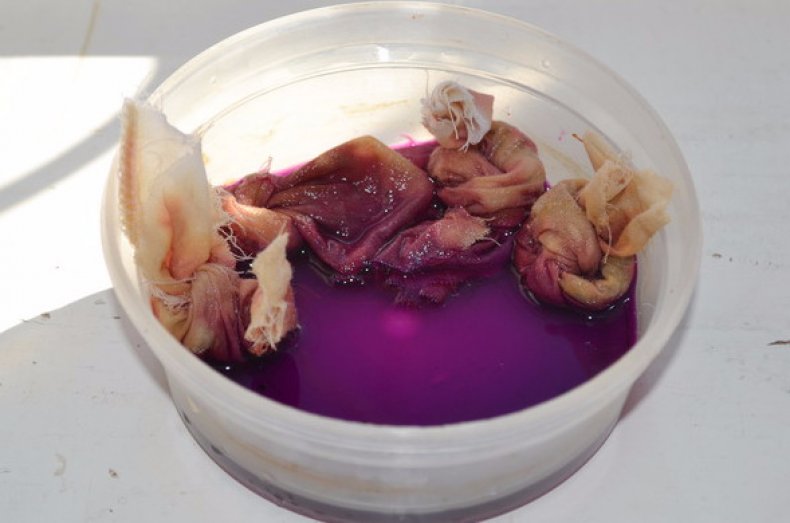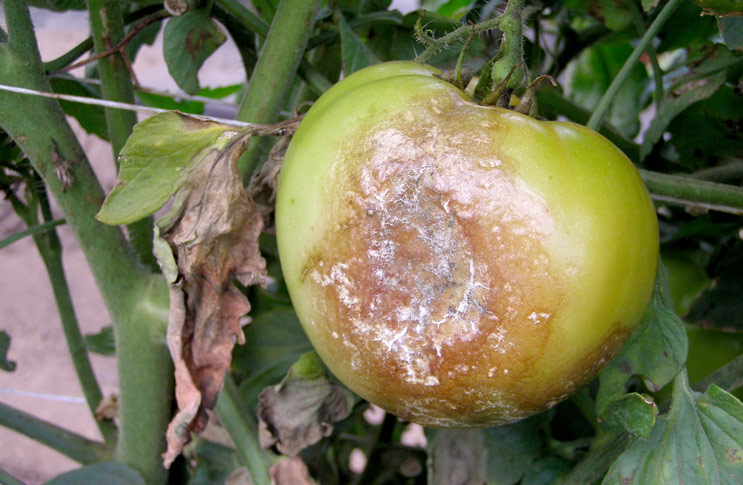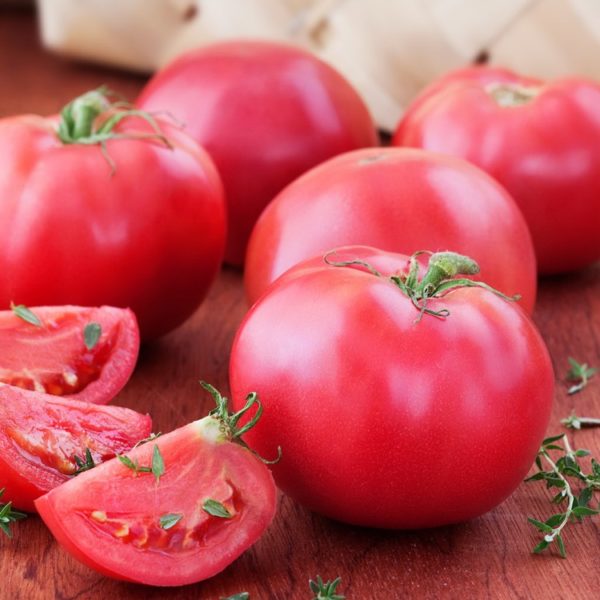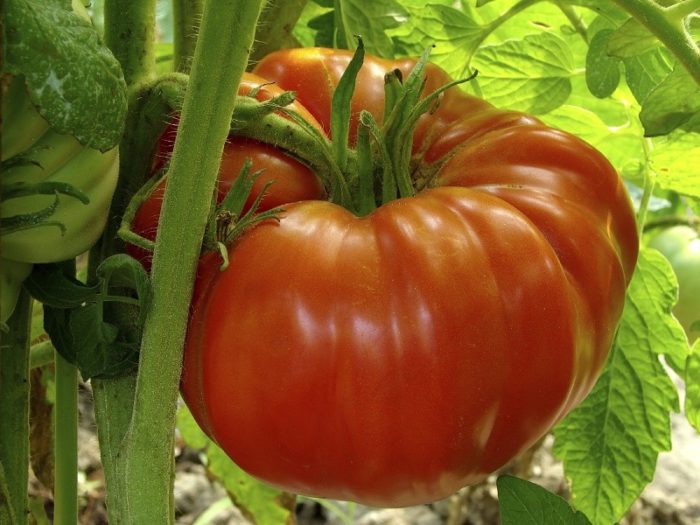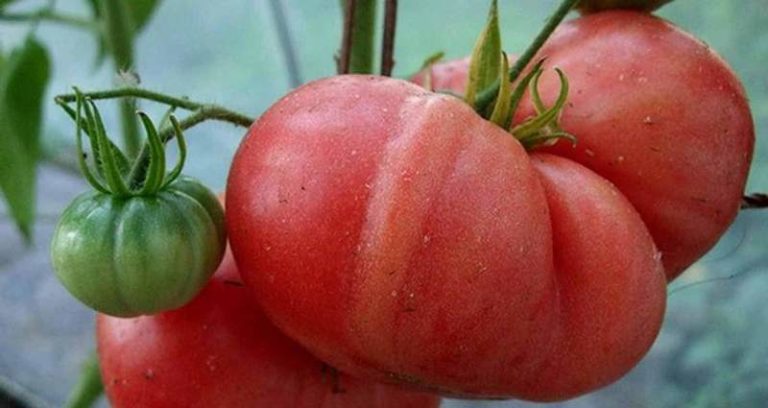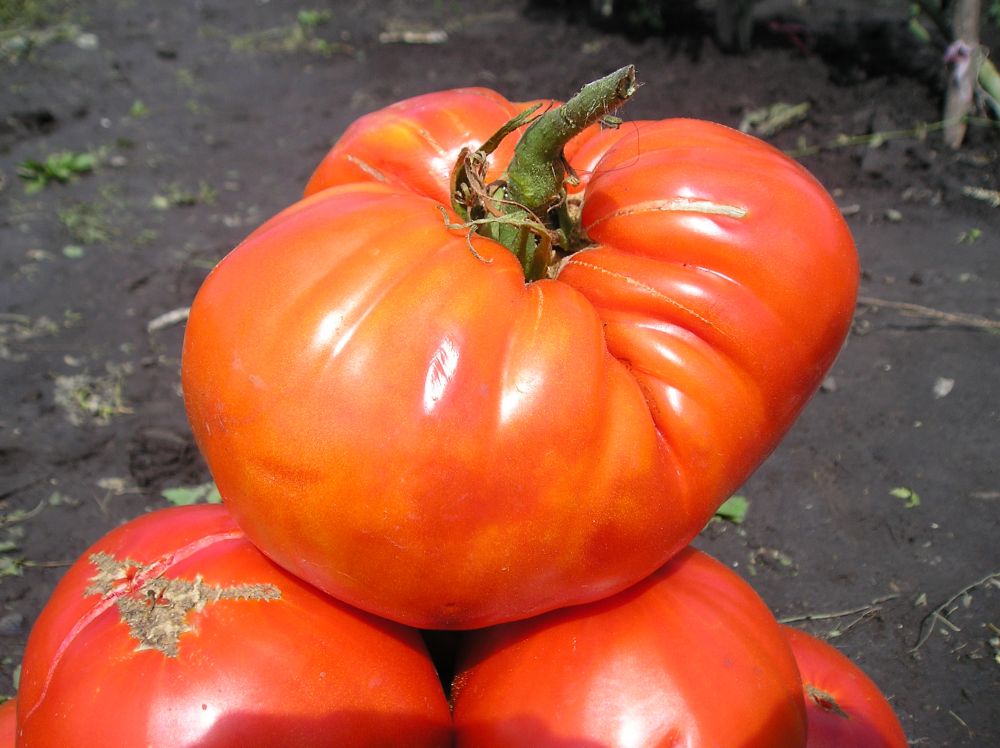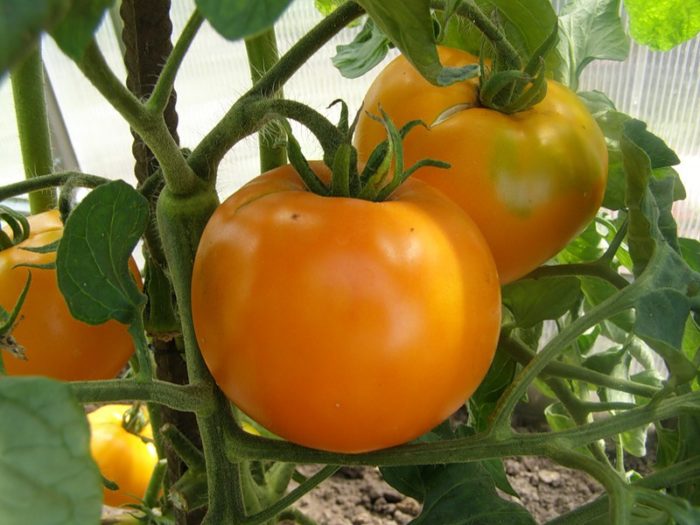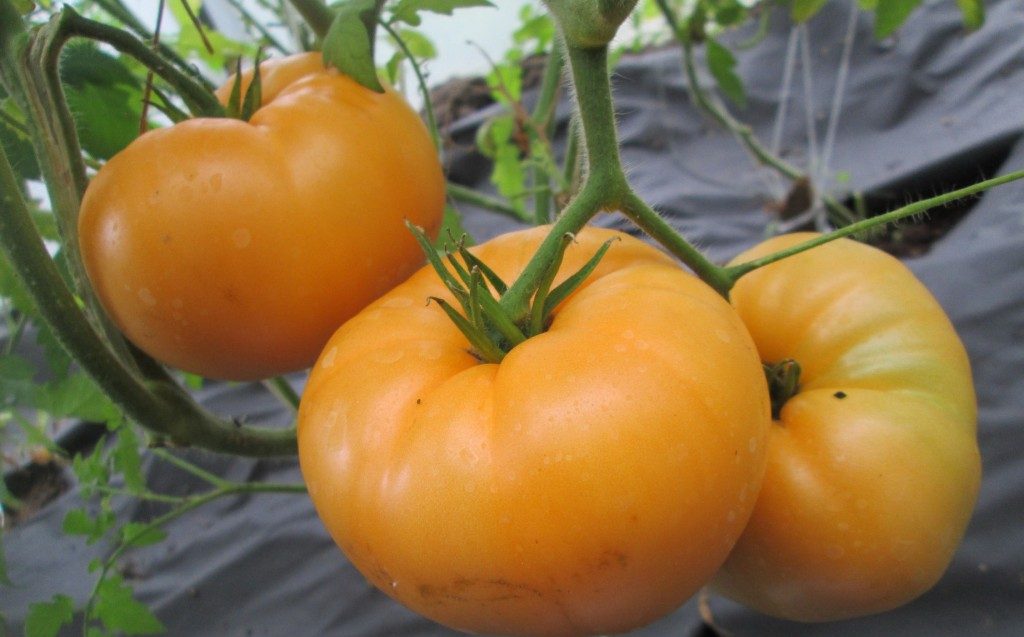Content:
Tomato varieties with large fruits have always been of interest to summer residents who plant in their own garden. When they choose one or another tomato for a plot, they must look at the quality of taste and yield, as well as the color of the pulp of the fruit. Considering all these parameters, we can say with a high degree of confidence that the Raspberry Giant tomato meets the highest standards.
From the history of creation
The variety was bred by Russian breeders and entered into the State Register in 2007 as a vegetable crop that can be grown both in the open field and under film.
Characteristics and description of the tomato variety Raspberry Giant
There is a first generation tomato hybrid that bears almost the same name. But still, the Raspberry Giant F1 has some differences from the variety described in this article. Surpassing its relative on some points, such as the size of the fruit and the taste of the pulp, it requires a more serious approach to cultivation, and it is impossible to collect seeds from its fruits.
Returning to the subject of this article, to the Raspberry Giant variety, it should be noted that this tomato is determinant, and its bush is not a standard one.
Raspberry Giant tomato, the height of a well-developed bush is from 0.5 to 1 meter, has a well-developed root system. The roots do not grow deeper, but spread out under a thin layer of earth. The shape of the leaves is no different from other varieties. Their color is dark green. On one bush, about 12 brushes can be tied.
According to the ripening period, the Raspberry Giant tomato variety is classified as an early-ripening tomato. It takes about three months from germination to the first harvest. Tomatoes are very well suited for growing in beds also because they have time to ripen before the temperature drops. Here are its additional characteristics:
- The stem is strong, holds fruit well, but it is better to install supports;
- The fruit does not crack. The variety is classified as giant, the fruits can weigh more than 400 g;
- Tomatoes do not fall off the bush;
- The skin of the fruit is pink;
- There is a small amount of seeds in the pulp, it is fleshy and tasty;
- The yield is about 6 kg per bush;
- On the table is universal. It is used fresh, directly from the garden and in the form, processed in preparations for the winter;
- It can be stored for a long time, but it is necessary to create some conditions so that the quality of the tomatoes does not deteriorate;
- Good for shipping and selling.
Agrotechnology for growing tomatoes
Seed preparation and planting
Sowing can be started in the first two weeks of March. Planting material is preferable to purchase from large and proven manufacturers, well-known on the market. It would be better to prepare the seeds. To do this, they are selected for germination, for the prevention of diseases, they are etched and soaked in a growth stimulator. The procedure will be as follows:
- First, the seeds are dipped in a salt solution, based on a spoonful of salt and a liter of water. All seeds that have surfaced must be removed;
- A few days before planting, they are etched in a weak solution of manganese, but not more than 30 minutes, then the seeds are washed and dried;
- A day or two before sowing, seeds are placed in growth stimulants. There is also a popular way to grow well.This is the juice of regular aloe;
- Seeds sprout pretty quickly, in just five days, so they can be germinated, or you can do without it.
You also need to be ready at the time of disembarkation of containers and soil. You can make the soil yourself. To do this, it is necessary to mix humus and ordinary earth from the garden equally and add a glass of wood ash, as well as sand to a third of the volume. The land before sowing is also treated with boiling water with potassium permanganate.
The seeds are planted shallowly, about 0.5 cm, the distance between them is left at 1-2 cm. After that, they are covered with a film or glass, which are removed when shoots appear. Now you need to water and provide access to light.
Picking
After 3-4 true leaves appear, thinning is carried out. Raspberry Giant takes it well. Seedlings are divided into separate small containers, for example, cups. It is better if the container is made of peat, and the seedlings can be planted with it on the site without damaging the roots. If they are damaged, and even not too favorable weather conditions, the culture can stop growing for a long time.
Transfer to the garden and care
In order for the seedlings to have the strength to build up the green mass, nitrogen fertilization is introduced after two weeks. A sufficient amount of light is required during the growing season and the hardening of seedlings. For hardening future tomatoes, the room temperature is lowered by opening the vents or taken out to the threshold. At first, the time of such a walk should be 30-60 minutes so that the plants do not have a stressful state, and then, as they get used to it, they leave them in the air all night, of course, if frosts are not expected.
The seedlings are transferred to the soil when the weather has already settled. The land in the beds also needs to be prepared:
- The planting site is dug up and weeds are removed;
- For the prevention of diseases, the beds are spilled with boiling water with potassium permanganate;
- Holes are dug so that the roots of each plant are freely located;
- Humus, superphosphate and sand are added to the holes. Wood ash is scattered throughout the site;
- Seedlings are planted in the spilled holes.
In a permanent place, seedlings need time to adapt for them to take root. During this period, you only need to water and remove, as necessary, unnecessary grass. Loosening is necessary after each watering.
The first feeding in the form of a complex preparation is applied after two weeks. After the same period of time, organic fertilizers are applied. This is dung with water or manure. These dressings alternate with each other.
In order to form two stems, and this is the best option, leave the main stem and stepson of the upper sinus on either side. Some of the leaves are removed from the bottom.
Spraying with a manganese solution is applied every few days to prevent morbidity. To tie up the bushes, use trellises or sticks.
Diseases of the variety
Raspberry Giant does not suffer from apical rot, showing good resistance to this disease. With an epidemic of cladosporium and late blight, they fall ill with them, like other varieties.
Advantages and disadvantages of the variety
Summing up all of the above, you can highlight the pros and cons of the variety. First of all, the advantages:
- o Early ripening, large fruits;
- o Can be grown for sale;
- o Antiallergenic grade;
- o Consumed fresh and used in the preparation of pasta, juice, salads and ketchup;
- o Low incidence.
Among the disadvantages are:
- o Inability to roll a tomato whole for the winter;
- o Powerful roots take up a lot of space;
- o It is necessary to form a bush and carry out pinching;
- o If stored incorrectly, the crop will deteriorate.
Tomato Raspberry giant is a good, early ripening variety with large, tasty fruits. His agricultural technology is not so difficult, you can definitely cope with it even with not too much summer cottage experience.

